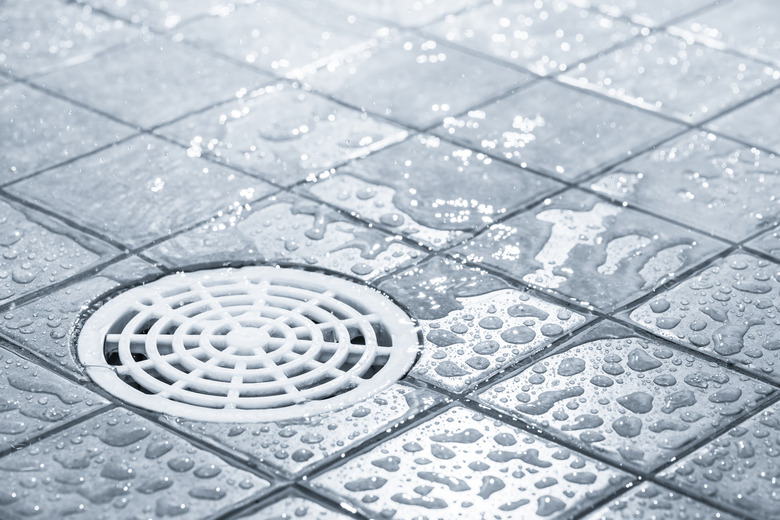Different Kinds Of Shower Drains
We may receive a commission on purchases made from links.
A home catastrophe can be averted by installing the right shower drain for the type of shower you have. The wrong drain can leak, allowing mold to grow underneath the shower (causing not-so-pleasant shower drain smells) and water to damage the floor and subfloor. The material and construction of the shower can help you to select the right drain.
Types of Showers and Drains
Types of Showers and Drains
The drain you select for your shower should be based on the construction of the bathroom floor and the type of shower you have. For example, tiled showers on wood flooring require a different drain than those on concrete floors. And one-piece showers or premolded shower bases need another type of drain.
Consider the type of shower you are installing first before choosing the drain you need. If you are unsure of the drain installation, consult a plumber. Without tight seals and proper installation, your shower drain could cost you more than the price of a plumber.
The Toilet Zone describes the three main types of shower drains: single-piece drains, three-piece drains and multi-piece drains.
Multi-Piece Shower Drains
Multi-Piece Shower Drains
Multi-piece shower drains are the most complex type, but they are used with the simplest shower stalls, such as a one-piece shower stall or those with a premolded base.
From the top of the drain to the bottom, these drains consist of a strainer, a brass locking ring, a rubber compression gasket, the flange, the threaded drain body, a rubber gasket or washer and a tightening nut.
The parts from the strainer to the flange fit above the floor of the shower stall. The rest of the parts are under the shower and should be installed first before sliding the shower or base into place.
Three-Piece Shower Drains
Three-Piece Shower Drains
A three-piece shower drain can be used also as a floor drain because the construction is the same. These drains fit a tiled shower to a shower pan underneath to protect a wooden subfloor from becoming moldy or rotting.
The three parts of this type drain allow for adjustments based on the thickness of the tile on the shower floor. The top portion screws into the middle part of the drain, which is screwed into the shower pan and the pipe socket in the lower part of the drain. Only a professional should install a three-piece shower drain, because an amateur might not properly seal all the parts of the drain, resulting in costly damage to the subfloor from leaks.
Single-Piece Shower Drains
Single-Piece Shower Drains
The simplest drain installation is for the single-piece drain. These are used with tiled shower bases installed over a concrete subfloor. Unlike wood, if concrete gets wet from leaks, it won't be damaged. One-piece drains consist of a strainer screwed into the recessed area of a pipe socket. The drain pipe fits into the socket and the strainer is attached to the top with screws.
Shower Drain Styles
Shower Drain Styles
Schluter Systems lists point drains and linear drains as the two primary shower drain styles. A point drain typically is in the middle of a shower floor, and a linear drain is shaped like a line — long and narrow. If you install a point drain, look for one that's in the shape of a square. Shower floor tiles typically are also square-shaped, so installing a square drain matches the design of the floor tiles and eliminates having to cut a round hole in your square tile.
